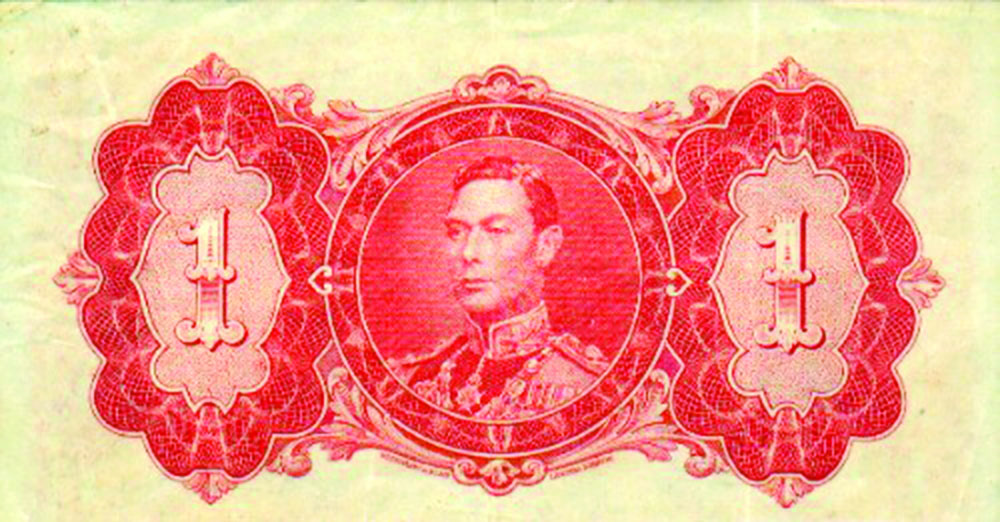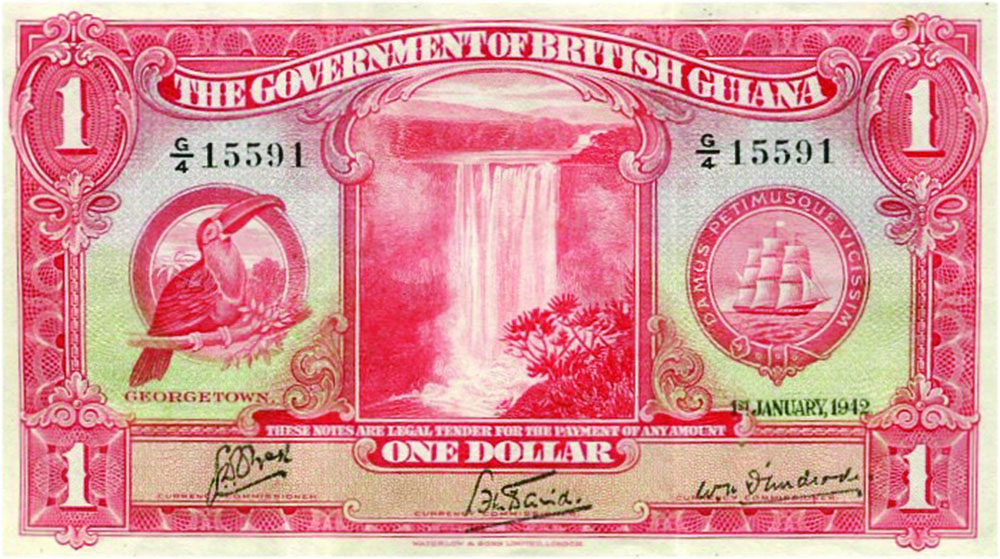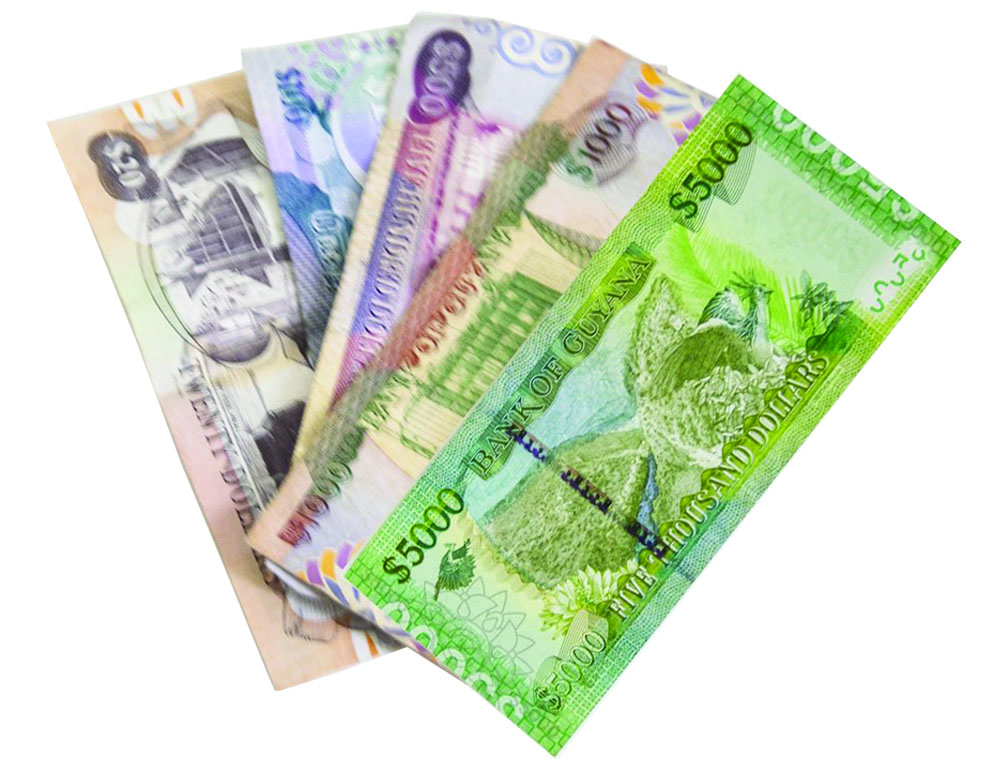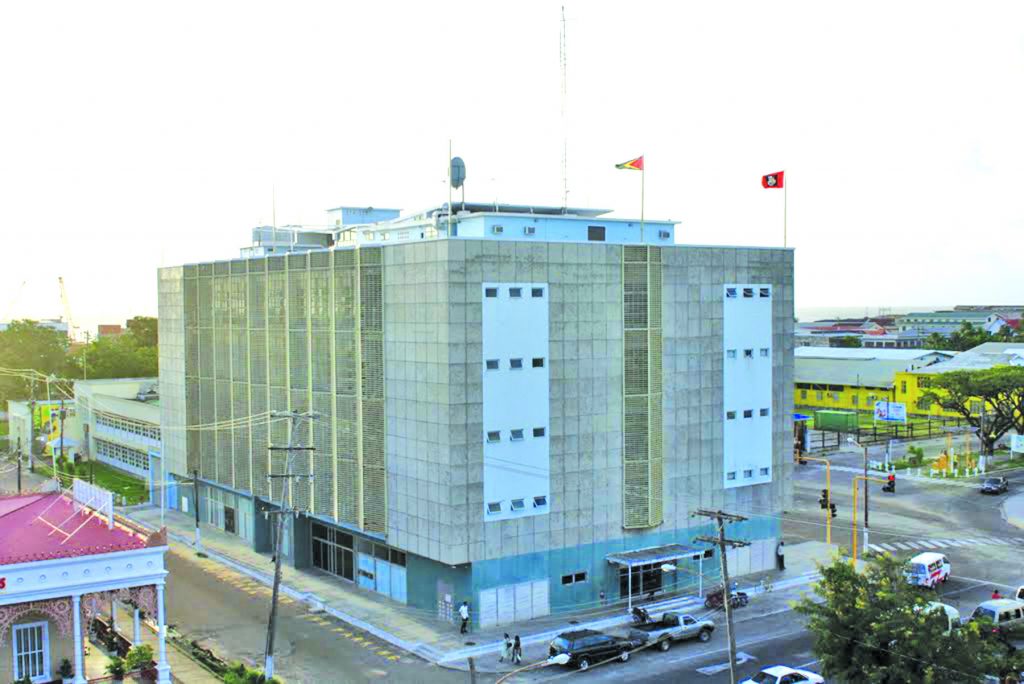Money was first introduced to Guyana by the Dutch colonists, but there was never much in circulation.
Previously, according to Guyana.org, there was an informal barter system among the original inhabitants of the territory before they began trading with Dutch colonists and traders for European goods such as knives and cutlasses.
Even after the Dutch introduced money, they rarely used it for large business transactions. It was normal for them to write promissory notes, which eventually would be redeemed from their agents in Amsterdam where they sent their sugar and other produce to be sold.
The Dutch colonists introduced the guilder and other coins such as pennings, stivers and bitts whose values fluctuated over time. Side by side with these coins from other European nations circulated. These included the English guinea, the Mexican dollar, and the Portuguese gold ducat, moidore, and joe.
Paper money and English coins
By the end of the 18th century, a type of paper money issued by the government or the banks in Europe began appearing in Guyana.
Usually, when a person had accumulated a quantity of paper money, he would exchange the notes for gold at the Receiver’s Office for Colonial Taxes. This office would then re-issue the paper money to the public again.





When the British seized Guyana in 1803, English coins began to make a gradual appearance. However, the Dutch coins continued to be the main means of commercial exchange throughout the rest of the century, by which time the Portuguese and Mexican coins could hardly be found in circulation.
Many slaves saved coins that they acquired by doing odd jobs during their free time, or through the sale of the produce from their provision grounds.
The first bank to be established was a savings bank for the slaves in 1828. This occurred at a time when the British government was implementing policies aimed at improving the social condition of the slave population in its colonies.
In 1836, two other banks, the Colonial Bank and the British Guiana Bank, were set up. The former, many years later, was taken over by Barclays Bank, while the latter, during the second decade of the 20th century, was absorbed by the Royal Bank of Canada.
In 1900, the Dutch coins were withdrawn and were replaced by British coins such as the half penny, penny, sixpence, twelve pence, shilling, florin, half crown, crown, sovereign and guinea.
Official British paper money was also introduced into Guyana at this time. This system of currency remained until 1951 when Guyana joined with the British Eastern Caribbean territories to use common Eastern Caribbean coins and currency notes, even though many of the British coins continued to circulate for a while.
Independence
Guyana, on attaining independence in 1966, withdrew from the Eastern Caribbean currency board and began to issue its own coins (one cent, five cents, ten cents, twenty-five cents, fifty cents) and currency notes with values of one dollar, five dollars, ten dollars and twenty dollars.
The Bank of Guyana, as noted on its website, was established through the Bank of Guyana Ordinance No. 23 of 1965. Actual operation commenced on Oct. 16, 1965, seven months before the country gained political independence.
This Ordinance established the Central Bank as an ‘autonomous institution’ with headquarters in the capital city of Georgetown.
The early establishment of the Bank was promoted by an agreement of the U.K. government (acting for the still colonial members of the British Caribbean Currency Board (BCCB) and the Trinidad & Tobago government), for the dissolution of the BCCB by mid-1967 and the cessation of issuance of currency after 1965.
At its establishment, the Bank was housed in temporary premises in three locations. The governor operated from an office assigned to him in the Parliament Building.
Office space was rented from the Colonial Life Insurance Company, High Street, Georgetown, to house the Research Department while the BCCB’s office in the General Post Office Building, Georgetown, executed currency operations on behalf of the Bank.

The Bank commenced issuing the new national currency notes on November 15, 1965, to replace the BCCB notes, the issuance of which was expected to cease by December 31, 1965. However, national coins were not issued until mid-1967.
The Ordinance establishing the Bank was revised and became the Bank of Guyana Act. CAP:85:02. This Act was further revised in 1995, 1998 and late 2004.











